slAItor
VS
 DL.Translator
DL.Translator
slAItor
slAItor represents a revolutionary approach to language translation by combining recent advances in AI (GPT) with standard machine translation techniques. The system goes beyond basic translation functionality by offering unique features such as step-by-step translation explanations, error detection and correction, and multiple translation style options.
Supporting 28 language pairs, slAItor provides comprehensive translation services with capabilities like translation paraphrasing, style calibration, and detailed error explanations. The system utilizes a credit-based system for translations, with different rates depending on the complexity of the requested service.
DL.Translator
Leveraging smarter language models like GPT, this platform provides advanced document translation services designed for efficiency and accuracy. It excels in contextual understanding, enabling near-human natural language processing results. The system supports a wide array of languages, from common ones like English, Spanish, and Chinese to less common ones like Lao, Georgian, and Yiddish, ensuring broad applicability.
The service is built to handle various document formats, including the translation of text within images in PDF files and scanned documents through OCR support. Emphasis is placed on maintaining the original document's format throughout the translation process. Users benefit from data security with encrypted storage and the ability to manage or delete their documents. The platform also supports large file uploads up to 500MB and offers a free preview translation for quality assessment before committing to a full translation.
Pricing
slAItor Pricing
slAItor offers Paid pricing with plans starting from $25 per month .
DL.Translator Pricing
DL.Translator offers Usage Based pricing .
Features
slAItor
- Step-by-Step Translation: Detailed explanation of translation process
- Error Detection: Spots, explains, and corrects translation errors
- Multiple Styles: Offers various translation alternatives and styles
- Language Coverage: Supports 28 language pairs
- Style Calibrator: Adapts translations to different contexts
- Commercial License: Allows commercial use of translations
DL.Translator
- GPT Language Model Integration: Utilizes powerful contextual understanding capabilities of models like GPT and GPT4 for near-human translation results.
- OCR Support: Recognizes and translates text within images in PDF documents, including scanned files.
- Format Preservation: Maintains the original document layout and formatting during translation.
- Wide Language Support: Translates between a vast array of languages.
- Large File Support: Handles documents up to 500MB in size.
- Data Security: Encrypts stored data, ensuring user privacy and control over documents.
- Free Translation Preview: Automatically translates a portion of the uploaded document for quality evaluation.
Use Cases
slAItor Use Cases
- Professional document translation
- Language learning and education
- Translation quality checking
- Content localization
- Translation style adaptation
DL.Translator Use Cases
- Translating business documents for international communication.
- Converting academic papers or research into different languages.
- Localizing technical manuals or user guides.
- Translating legal documents while preserving layout.
- Making scanned documents accessible in other languages.
- Translating marketing materials for global audiences.
FAQs
slAItor FAQs
-
What's a credit?
A credit is the unit slAItor uses to measure translation cost. 1,000 characters cost 1 credit, tripled to 3 credits for step-by-step translations and checker mode. The minimum cost is 0.1 credit per query. -
What AI engine is slAItor using?
It uses a combination of standard machine translation technologies and state-of-the-art large language models from the GPT family. -
Is slAItor better at translating than other online translation systems?
No, the translation quality is slightly worse than well-established translation systems, but slAItor is cheaper and offers unique features not available in other online systems.
DL.Translator FAQs
-
How much does it cost to translate a document?
The cost is determined by the document word count. Typically, 8 credits (equivalent to 1 USD) can translate approximately 20,000 words. Selecting the GPT4 model incurs a cost 10 times higher. -
How secure is the translated content?
Your uploaded documents and their translations are stored securely and privately with encryption. Only you can access them, and you have the option to delete them completely at any time. -
How is the translation quality?
GPT-based translation offers more natural and accurate results compared to standard machine translation, approaching human quality. However, for highly professional or culturally specific content, human translation remains superior. The tool aims to provide near-human quality while maintaining automation and efficiency. -
Is GPT4 supported?
Yes, GPT4 is supported. It is recommended for translation tasks due to its superior natural language processing capabilities.
Uptime Monitor
Uptime Monitor
Average Uptime
99.72%
Average Response Time
157.93 ms
Last 30 Days
Uptime Monitor
Average Uptime
100%
Average Response Time
94.43 ms
Last 30 Days
slAItor
DL.Translator
More Comparisons:
-
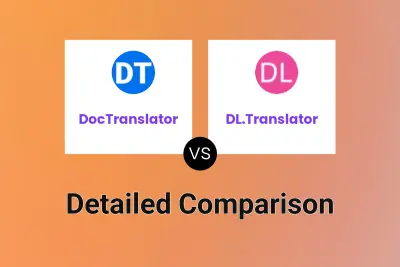
DocTranslator vs DL.Translator Detailed comparison features, price
ComparisonView details → -
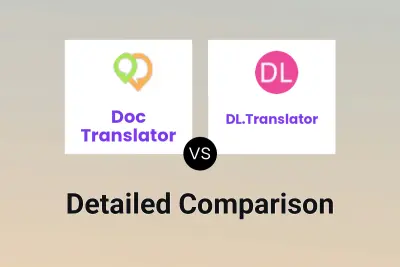
Doc Translator vs DL.Translator Detailed comparison features, price
ComparisonView details → -
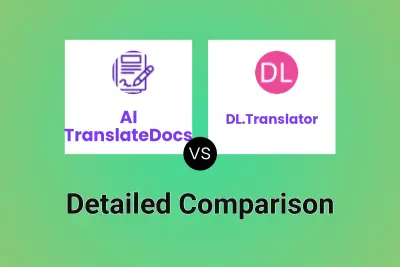
AI TranslateDocs vs DL.Translator Detailed comparison features, price
ComparisonView details → -

DeftPDF Document Translator vs DL.Translator Detailed comparison features, price
ComparisonView details → -
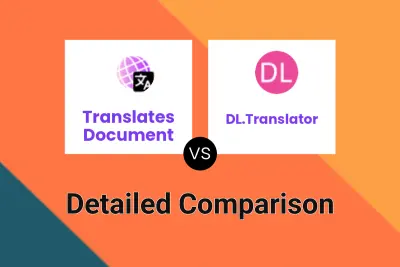
Translates Document vs DL.Translator Detailed comparison features, price
ComparisonView details → -

Translated.BEST vs DL.Translator Detailed comparison features, price
ComparisonView details → -
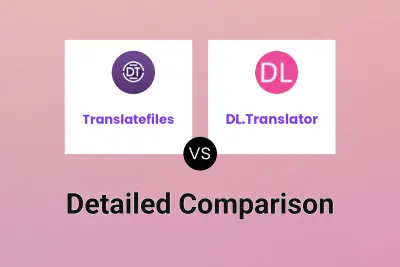
Translatefiles vs DL.Translator Detailed comparison features, price
ComparisonView details → -
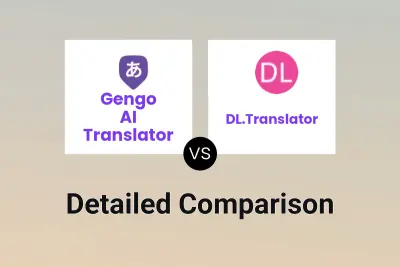
Gengo AI Translator vs DL.Translator Detailed comparison features, price
ComparisonView details →
Didn't find tool you were looking for?